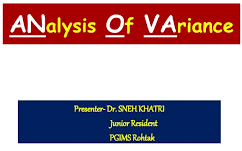Campar Industries Inc Case Study and Variance Analysis Order Instructions: This case is about variance analysis.

The purpose of this case is to allow you to break down several different types of variance that might occur in a business, including:
•A margin variance caused by differences in price and volume
•A combination of volume, product mix, and margin variance.
•A materials mix variance
•A breakdown of variance effects on an income statement
Please note that simply reporting the numbers is not an adequate solution; you have to explain how these different types of variance affect the whole firm. In addition,
•You need to compare how the different divisions performed.
•You need to clearly state how the firm performed as a whole
Campar Industries Inc Case Study and Variance Analysis Sample Answer
Campar Industries, Inc. Case Study
Variance analysis is an important component of financial and managerial accounting since it involves investigating financial performance deviations from the standards in organizational budgets definitions. Variances in businesses are of different types and arise from varied sources, and variance analysis typically concerns isolating these varied causes of income and expenses variation from the budgeted standards over a stipulated period of financial accounting. For example, in this case study of Campar Industries, Inc. the variances are analyzed across its four different divisions such as Alpha, Beta, Gamma and Delta as follows:
Approach
This case study problem involves analysis of different types of variances whereby the Alpha division problem involves the analysis of the gross margin variances; Beta division problem involves the analysis of gross margin mix variance; Gamma division problem involves the application of the mix variance concept to raw materials; and finally Delta division problem involves a review of a variance analysis problem consisting of both the margin variance as well as production cost variances.
Alpha division
The unfavorable volume variance is more than overcome by the favorable unit margin (which is also commonly referred to as the selling price) variance. Hence, the analysis of this problem clearly shows the importance to calculate the margin variance instead of revenue variances.
Beta division
From the above analysis, it is evident that if Beta changed its program of marketing for the purpose of producing actual results, the move was not a good one. This is mainly because shifting towards a mix that is “richer” did not lead to generation of adequate additional margin to overcome the sales volumes that were unfavorable as well as unit margin impacts.
Gamma division
Delta division
Sales volume variance: $0. This can be determined by inspection because both actual and budgeted total volumes were 5,000 units.
| Delta Division Statement of Budgeted and Actual Gross Margin | ||||||
| Budget | Actual | |||||
| Revenues | $1,143,500 | $1,135,000 | ||||
| Cost of goods sold @ standard | $821,200 | $810,250 | ||||
| Gross margin @ standard | $322,300 | $324,750 | ||||
| Production cost variances: | ||||||
| Materials usage | $16,200 | |||||
| Materials price | $6,480 | |||||
| Labor rate | $2,370 | |||||
| Overhead spending | $38,896 | |||||
| Overhead volume | $448 | |||||
| Total variances | $59,654 | |||||
| Gross margin, actual | $322,300 | $265,096 | ||||
There was an increase in the gross margin by $8,750 due to a $5 per unit higher margin of Product A; however, shifting product mix towards lower margin Product B led to the elimination of $6,300 of this gain. The production cost variances are self explanatory from the tables provided above with exception of the overhead volume variance which represents the amount of the standard overhead cost per unit that was predetermined and undercharged products for overhead, due to the fact that the overhead rate was determined on basis of a planned volume of 235,000 DLS, while the actual volume was relatively less at 233, 880 DLS.
Campar Industries Inc Case Study and Variance Analysis References
Chew, L., & Parkinson, A. (2013). Making Sense of Accounting for Business. Harlow: Pearson.
Nelson, M., Spiceland, J. D., Sepe, J. (2012). Intermediate Accounting, (7th ed.). New York, NY: McGraw-Hill Publishers Inc.
Walgenbach, P. H., Dittrich, N. E., & Hanson, E. I. (2013). Financial Accounting. New York, NY: Harcourt Grace Javonovich, Inc.




